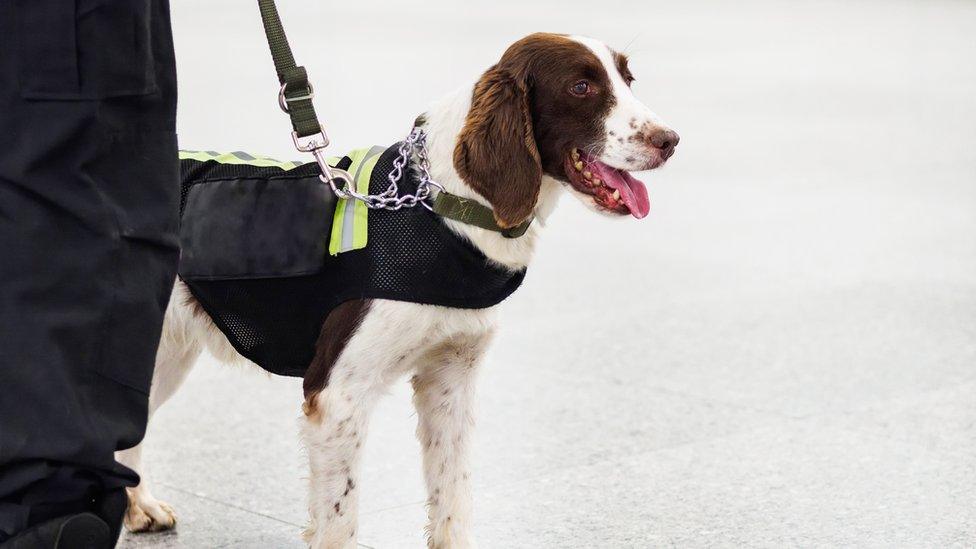Why are dogs' noses wet and cold?
- Published
- comments

Dogs are one of the most popular pets in the world and it's pretty easy to see why.
They're friendly, huggable and have cute little noses. But a new study suggests their snouts aren't just for sniffing out strange smells or clocking when dinner's ready.
Have you ever wondered why a dog's nose is usually cold and wet to the touch? It turns out that the tip of their nose, called the rhinarium, is filled with lots and lots of nerves and can sense heat sources from a distance.
Humans can also detect when something is hot because we have thermo receptors in our skin. However, dogs' super sensitive noses mean they can sense something known as "weak thermal radiation" from afar. This means objects don't have to be very hot for pooches to identify them.
Scientists from Lund University in Sweden and Eötvös Loránd University in Hungary carried out a series of experiments to see if dogs could pick up on clues about how hot different objects were. The results of their studies revealed that pups' noses are able to detect weak infra-red radiation released by a warm body or object.
This ability can be used to help dogs to recognise when warm-blooded prey are lurking nearby.
1. Dogs can take in and breathe out air at the same time!
2. Scientists claim dogs can smell between 10,000 and 100,000 times better than humans.
3. Wet noses help to keep dogs cool.
4. A sniffer dog is a pup that's been trained to detect certain scents by the police. These dogs are used to help solve crimes - how cool is that?!
5. A dog's individual nostrils can smell things separately.
The team of scientists began by training three dogs - Kevin, Delfi and Charlie - to pick out objects around 12 degrees hotter than room temperature. One object was kept at room temperature as a test.

Dogs are also known for their amazing sniffing abilities!
The researchers then covered the objects so the dogs couldn't see them and placed them 1.5 metres away so the dogs were unable to smell them. Despite this, all three pooches were able to identify the hotter objects.
The scientists also scanned the brains of 13 dogs to see how they responded when exposed to a warm object compared to one kept at room temperature.
Interestingly, the part of the brain connected to the dogs' noses lit up when exposed to the warmer object. This type of response didn't happen when it came to the object at room temperature.
Dogs aren't the only animals with this amazing ability, but only a handful of other species share the skill with canines. Some types of snake, beetle and vampire bat also use heat detection to hunt their prey.
- Published7 June 2019

- Published18 June 2019

- Published23 June 2019
